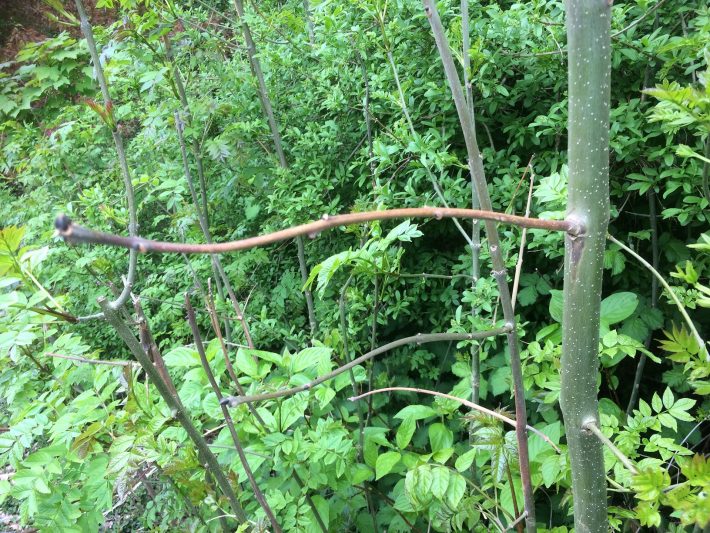Model way to protect trees
Rothamsted Research press release
Reducing year-to-year variability in the commercial demand for trees for planting could reduce the import of exotic pests and diseases that can damage local forests and woodland.

Oak processionary moth and ash dieback are among the most notorious tree pests and diseases introduced into the UK. And many exotic pests and diseases are suspected of having been introduced, or are known to have been introduced, through the import of commercial tree planting material.
New research, which unravels the dynamics of tree production, economics and variability in demand, shows how to reduce the risks of importing such damaging forest foes. The findings, from a team led by Rothamsted Research with the University of Cambridge, are published today in the Journal of Applied Ecology.
“Our results suggest that a balanced management of demand variability and costs can significantly reduce the risk of importing an exotic forest pest or disease,” says Vasthi Alonso-Chavez, an epidemiological modeller at Rothamsted. She has developed a mathematical model to understand the problem.
The model assesses the impacts that three scenarios of increasing variability of demand has on the relation-ship between gross profit margins for nurseries and the likelihood of introducing an exotic disease: where lo-cally producing a tree is 25%, 50% and 75% of the cost of importing a tree from Europe.
“When the cost of producing a tree in a UK nursery is considerably smaller than the cost of importing a tree, the risk of introducing an exotic disease is hardly affected by an increase in demand variability,” notes Alonso-Chavez. “But the risk increases as the cost ratio diminishes.”
Uncertainty in market demand is one of the main challenges for nursery businesses, says Alonso-Chavez. “Nursery growers often receive short notice of requirements for trees for planting…even though nurseries require up to three years to produce a tree seedling.”
As variability in demand hampers growers’ ability to gauge how many trees to produce, nurseries cut their potential losses by restricting production to reduce the number of unsold trees. If demand rises and there is a shortfall, they buy trees from foreign sources to make up the difference.
Nearly 300 plant pathogens were introduced into Britain over the past 50 years, of which 10 species affect the forestry sector. About two thirds of introduced species are native to continental Europe, chiefly the Nether-lands and France, with 10% from both North America and Asia.
Introduced pathogens from across continents can have catastrophic effects, record the researchers. Ash die-back (causal agent Hymenoscyphus fraxineus), native to Asia, was first discovered in the UK in 2012 in a nurse-ry in southern England, in plants that had been imported from the Netherlands. The disease causes high levels of mortality in all age classes of ash trees across Europe and the United Kingdom. This is a big problem as ash is among the top five most common broadleaf trees in Britain.
Oak processionary moth (Thaumetopoea processionea), native to southern Europe, affects the health of oak trees, people and animals. According to the Forestry Commission, “a protein in the caterpillars’ tiny hairs can cause skin and eye irritations, sore throats and breathing difficulties in people and animals who come into contact with them.”
Growers need a range of measures to help them to manage the fluctuations in demand and the differences in import and production costs, says Alonso-Chavez. She suggests longer-term grant schemes, to allow nurseries to plan their tree planting, and higher import duties, to encourage growers to sell home-grown plants.
Read the full article (freely available for a limited time):
Alonso-Chavez et al. Variability in commercial demand for tree saplings affects the probability of introducing exotic forest diseases. J Appl Ecol. 2018;00:1–10. DOI: 10.1111/1365-2664.13242
Media contact:
Vasthi Alonso-Chavez, Rothamsted Research, Tel: +44 (0) 1582 938 173, Email: vasthi.alonso-chavez@rothamsted.ac.uk
Like what we stand for?
Support our mission and help develop the next generation of ecologists by donating to the British Ecological Society.